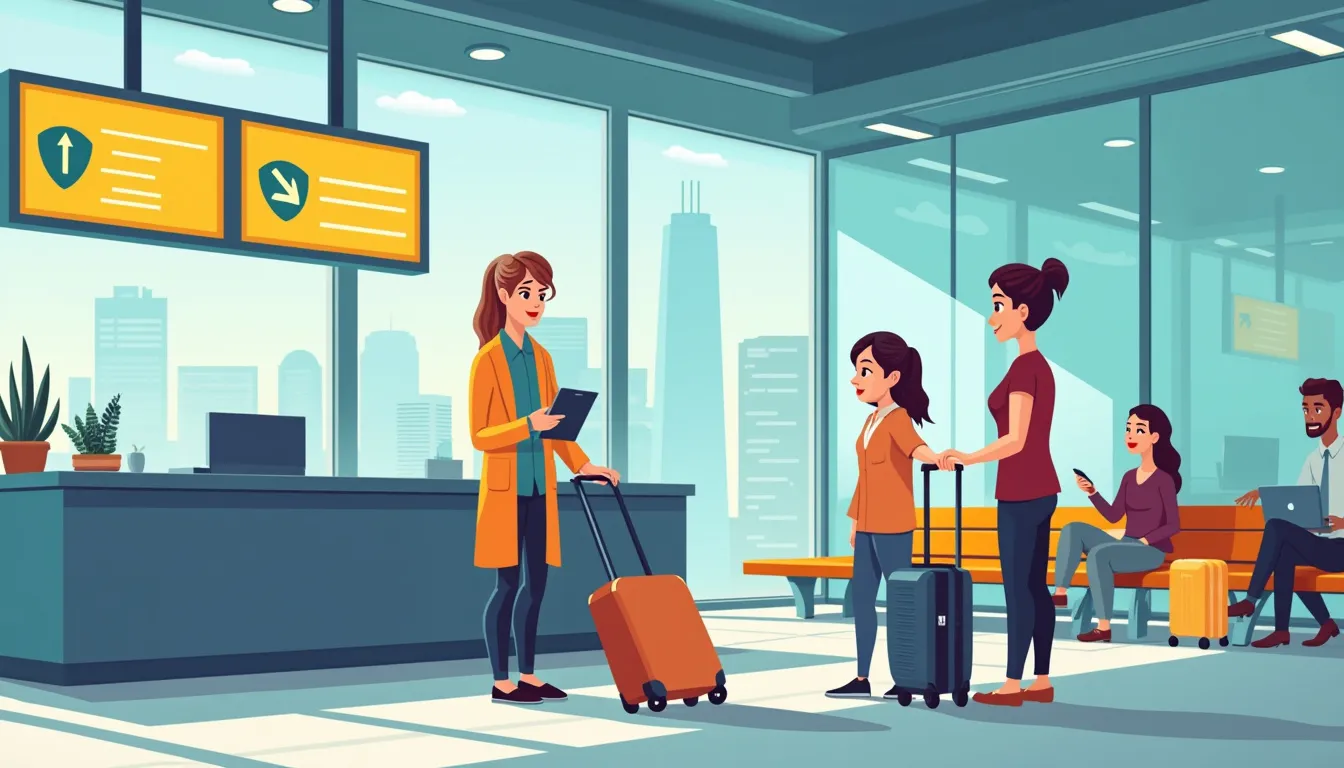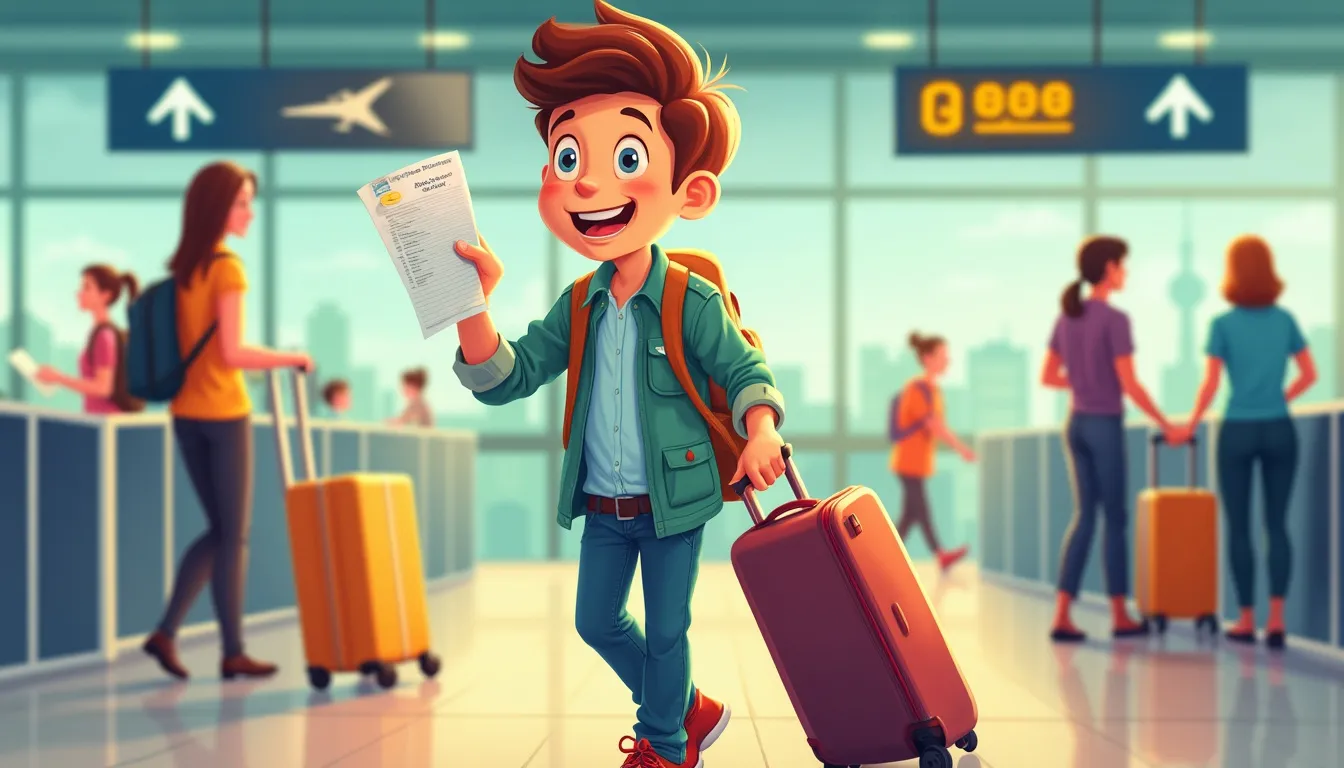Embarking on your first flight can be an exhilarating yet nerve-wracking experience. Whether you’re traveling for business or pleasure, preparation is key to ensuring a smooth and enjoyable journey. This guide on essential first time flying tips will equip you with the knowledge and confidence you need for a memorable adventure. We will cover every aspect of your journey, from pre-flight preparations like researching and booking early, packing smartly, and managing documentation, to in-flight strategies that will help you navigate the airport, stay comfortable onboard, and handle arrival procedures seamlessly. With these practical first time flying tips, you’ll be able to tackle each step of your journey with ease and poise, making your maiden voyage as a flyer a hassle-free and pleasant experience.
Pre-Flight Preparations: Crucial First Time Flying Tips for a Stress-Free Start
Research and Book Early: Vital First Time Flying Tips for Securing the Best Deals
When it comes to first time flying tips, the importance of researching and booking early cannot be overstated. Airlines often release tickets several months in advance, and the prices tend to be lower when they first appear. By booking early, you not only secure the best deals but also get a wider selection of seats. Use comparison websites to check different airlines and routes. Not all journeys are created equal, and sometimes a small change in itinerary can save significant costs.
While researching flights, pay attention to luggage policies, in-flight services, and cancellation terms. Some budget airlines may offer attractive ticket prices but charge extra for baggage, seat selection, and even in-flight meals. To avoid unexpected surprises, read through the terms and conditions carefully before making your purchase.
Another tip is to sign up for alerts from travel agencies or airlines. These alerts keep you informed about flash sales and special promotions, allowing you to grab the best offer as soon as it becomes available. Flying during off-peak seasons can also result in substantial savings. The fact that school holidays and major holidays tend to have higher ticket prices should not come as a surprise; therefore, planning your travel dates around these times can make a big difference.
Packing Essentials: Key First Time Flying Tips to Ensure You’re Fully Prepared
Packing correctly is one of the cornerstone first time flying tips. A well-packed bag can make your journey much smoother. Start by making a packing list. Essential items include travel-size toiletries, necessary medications, a change of clothes, and tech gadgets such as chargers and headphones. Remember to comply with the TSA liquid rule, which limits liquids to containers of 3.4 ounces or less, all fitting in a quart-sized, clear plastic bag.
Clothing selection is crucial. Choose comfortable, layered outfits suitable for varying temperatures. Airplane cabins can be chilly, so a lightweight jacket or sweater can be valuable. Shoes should be easy to take off and put on, especially for security checkpoints. Additionally, invest in a good quality neck pillow, eye mask, and a pair of noise-canceling headphones to improve your in-flight comfort.
Don’t forget to pack important travel documents such as your passport, ID, boarding pass, and travel itinerary in an easily accessible place. Keeping everything organized in a travel document holder can save you lots of time and stress at the airport.
Another essential tip is to weigh your luggage before heading to the airport to avoid excess baggage fees. Most airlines have strict weight limits for both checked and carry-on luggage. Knowing these limits in advance will help you pack appropriately.
Documentation and Check-In: Important First Time Flying Tips for a Smooth Experience
Managing your documentation and checking in properly is a substantial part of first time flying tips. First and foremost, ensure your passport and ID are up-to-date. Some countries require passports to be valid for six months beyond your travel dates, so double-check these requirements well in advance.
Electronic boarding passes are a convenient option. Most airlines allow you to check-in online 24 to 48 hours before your flight. Doing so not only saves time but also gives you the opportunity to pick preferred seating. Print your boarding pass or save it on your mobile device as a backup.
In addition, be aware of visa requirements for your destination country. Some countries require a visa on arrival, while others require you to apply in advance. Failure to comply with these regulations can result in denied boarding.
For domestic flights, arrive at the airport at least two hours before your departure time, and for international flights, three hours is recommended. This ensures you have ample time to manage any unforeseen delays, whether they are related to security checks, baggage issues, or other pre-flight procedures.
At the airport, keep your personal identification documents handy. You’ll need them multiple times, including at check-in, security checkpoints, and boarding gates. A designated travel wallet or a zipped pocket in your carry-on bag works well for this purpose.
Lastly, familiarize yourself with the specific airline’s check-in process and baggage policies. Some airlines have self-service kiosks where you can print baggage tags and boarding passes, while others offer curbside check-in. Knowing what to expect will make the process much more straightforward and stress-free.
Discover more travel tips and insights on our blog.

Navigating the Airport: Essential First Time Flying Tips for Hassle-Free Movement
Efficiently navigating an airport can seem daunting, especially for those flying for the first time. To ensure a smooth and stress-free experience, familiarize yourself with the layout of the airport beforehand. Many airports offer maps on their websites, which can help you locate check-in counters, security checkpoints, restrooms, dining options, and your departure gate. Upon arriving at the airport, follow the signs and directions clearly marked throughout the facility.
Arrive at the airport at least two to three hours before your flight’s departure, particularly if it’s your first time flying. This will provide you with ample time to handle any unforeseen circumstances, such as longer-than-expected security lines or last-minute changes. Have your identification and boarding pass readily accessible as you approach the security checkpoint to make the process faster. Remember, any liquids in your carry-on luggage should adhere to the 3-1-1 rule: containers must be 3.4 ounces (100 milliliters) or less, all liquids must be placed in a single, quart-sized plastic bag, and you’re limited to one bag per passenger.
Onboard Comfort and Etiquette: Top First Time Flying Tips for a Pleasant Journey
Once onboard the aircraft, ensuring your own comfort and respecting fellow passengers contributes significantly to a pleasant journey. Start by dressing in comfortable layers; temperatures can fluctuate significantly on an airplane. Bring a travel pillow and a light blanket if you tend to get cold. Select an aisle seat if you prefer easy access to the restroom or a window seat if you prefer having a view or a resting spot for your head.
Staying hydrated is crucial during flights, especially long haul ones. Airplane cabins are typically low in humidity, which can lead to dehydration. Drink plenty of water and avoid excessive consumption of caffeine or alcohol. A good rule of thumb is to drink about 8 ounces of water every hour you’re in the air. Additionally, walking around the cabin periodically can help prevent stiffness and improve circulation.
Practicing good etiquette onboard also enhances the experience for everyone. Keep your voice low when having conversations, and use headphones if watching a movie or listening to music. Be mindful of your space and avoid reclining your seat abruptly. If you need to recline your seat, do so slowly and check if the person behind you is considerate. Respect the personal space of your seatmates and avoid placing your belongings in the middle seat if it’s unoccupied. Following these simple first time flying tips can make your flight more enjoyable for yourself and others.
Arrival Procedures: Crucial First Time Flying Tips for a Seamless Transition
Upon landing at your destination, the arrival procedures can be just as important as the pre-flight preparations. Listen carefully to the announcements made by the flight crew as they will provide valuable information about disembarking and arrival procedures. Gather all your personal belongings from the overhead bins and seat pockets before leaving the plane.
If you have checked luggage, follow the signs to the baggage claim area to retrieve your bags. This process can take some time, so be patient. In many airports, monitors display the carousel number where your flight’s luggage will arrive, so check these to avoid any confusion. Be sure to have your baggage claim ticket handy in case there are any issues locating your luggage.
For international travelers, after collecting your luggage, you will need to proceed to customs and immigration. Have your passport and any required documents ready as you approach the customs official. Answer any questions clearly and honestly. Knowing the customs regulations of the country you are flying into can prevent potential issues; some items might require declaration or may be restricted entirely.
Finally, consider transportation options from the airport to your final destination. Research the available options in advance, whether it be public transport, taxis, ride-share services, or rental cars. Each airport typically has several signs pointing towards different exit and transportation options. By following these crucial first time flying tips, you will transition seamlessly through arrival procedures and be well on your way to your destination.
Navigating your first flight can be an exciting yet daunting experience, but with these essential first time flying tips, you can ensure a smooth and enjoyable journey. From meticulous pre-flight preparations to strategic in-flight practices and seamless arrival procedures, each step is designed to enhance your travel experience.
Begin by researching and booking your flight early to secure the best deals and ensure you have ample time to plan. Early booking can also afford you better seating choices and flexibility. Packing essentials meticulously can’t be stressed enough; remember to adhere to airline regulations regarding carry-on and checked luggage, and pack a few comfort items in your carry-on to make your journey more pleasant. Documentation is another critical area – having all necessary documents organized and checked well before departure can save you from last-minute stress at the airport.
Navigating the airport can be one of the more intimidating aspects for new travelers. Familiarize yourself with the layout of your departure airport and follow signage closely to streamline your movement through checkpoints. Once onboard, understanding basic etiquette and knowing how to make yourself comfortable, such as wearing layers for temperature changes and bringing noise-cancelling headphones, can greatly enhance your in-flight experience.
Finally, acquaint yourself with arrival procedures, from collecting your luggage to passing through customs. Knowing what to expect upon landing can make the transition from airplane to destination much smoother. By following these practical tips, your first flying experience will not only be stress-free but also enjoyable, laying a solid foundation for all your future travel adventures.
Remember, every seasoned traveler started where you are now. With preparation and a positive mindset, your journey through the skies will be a memorable one. Safe travels!







